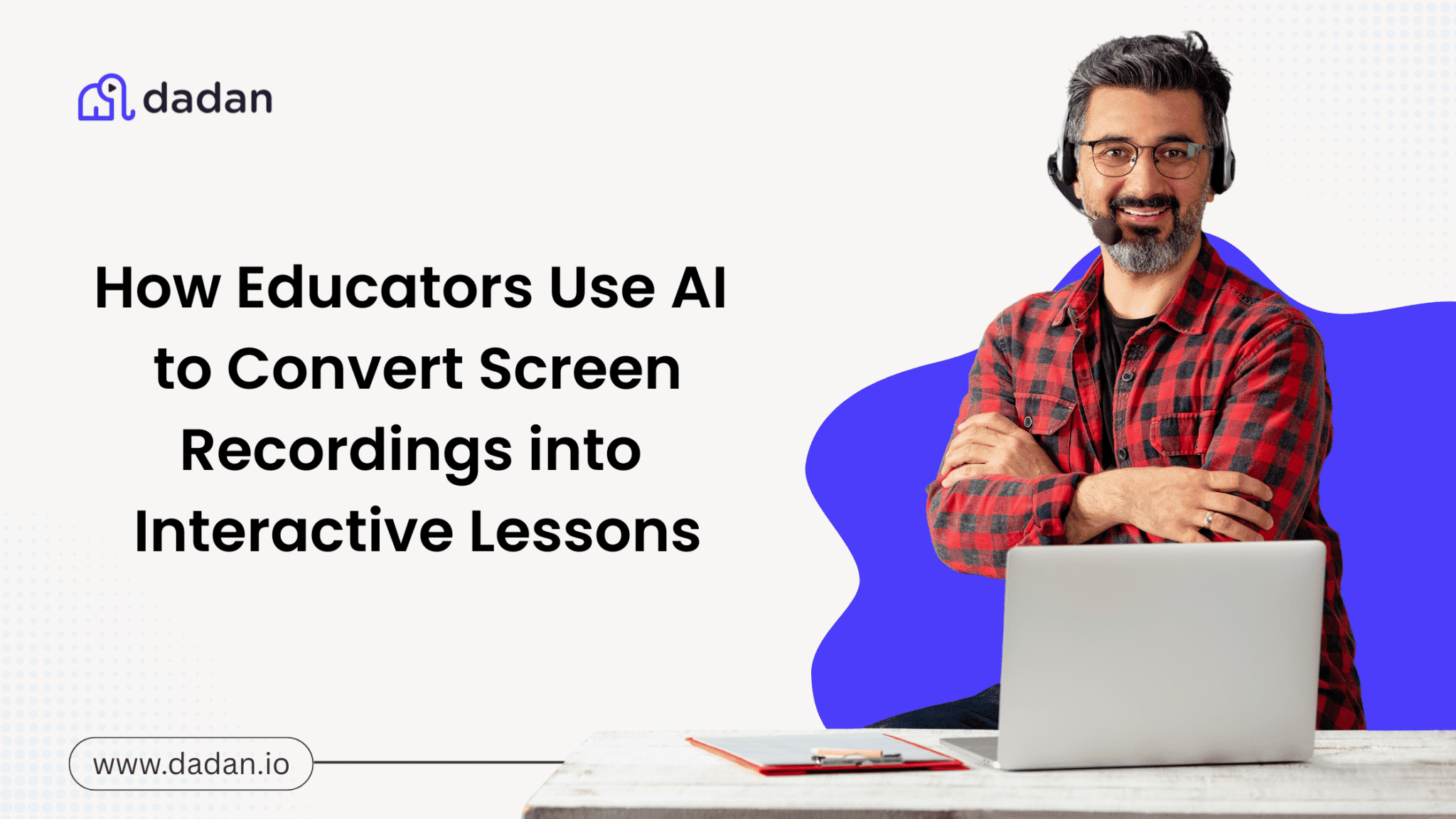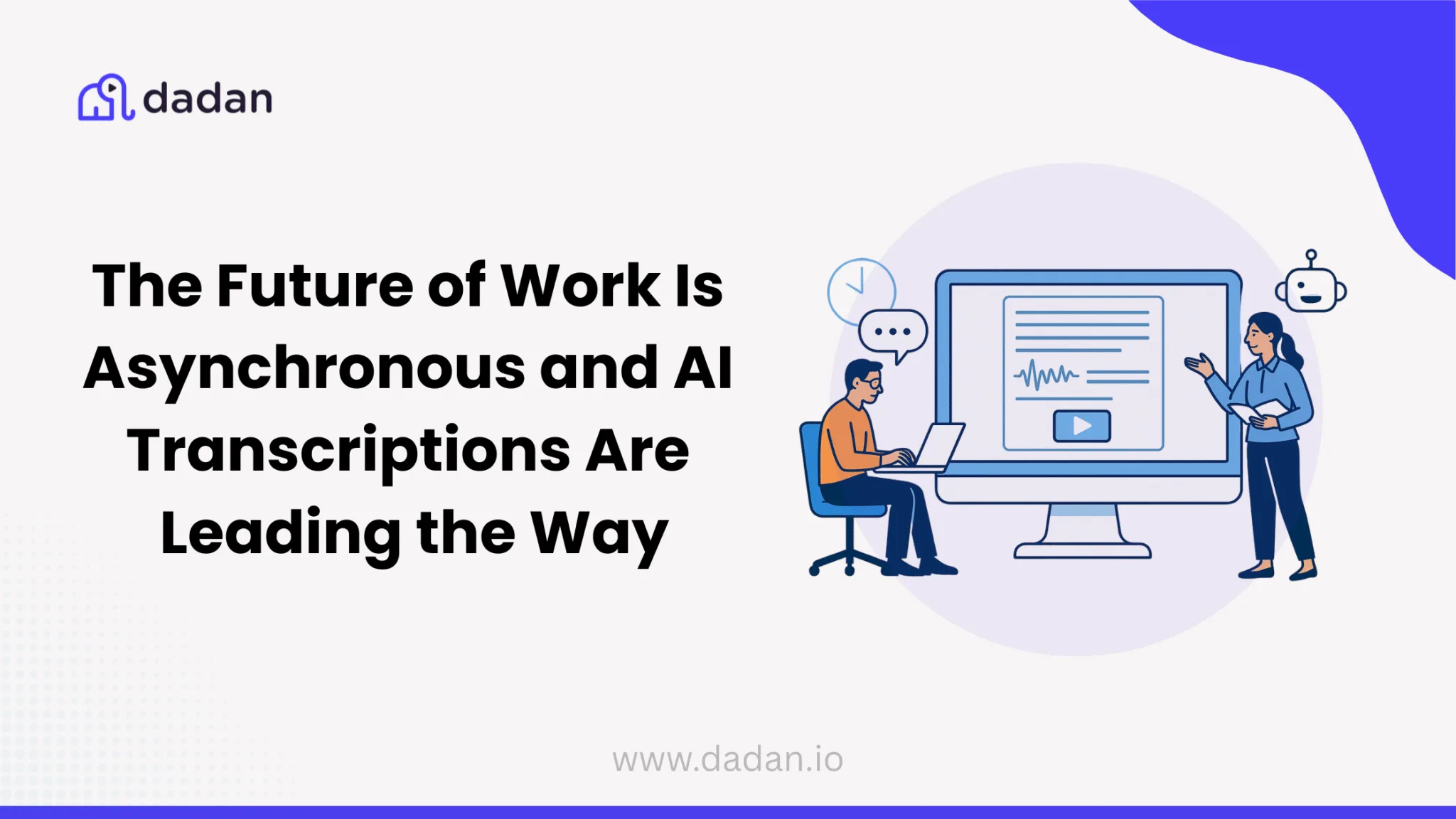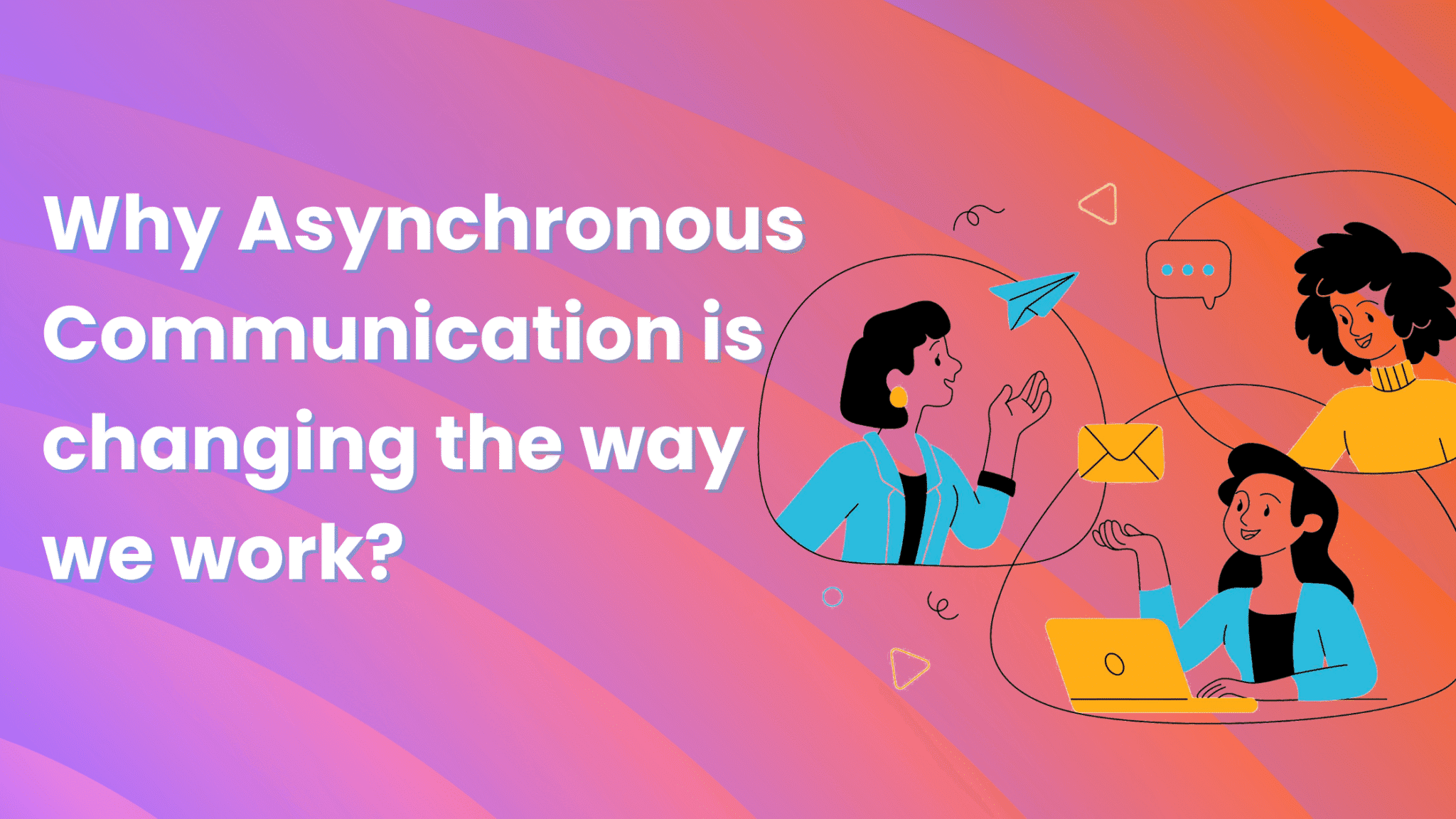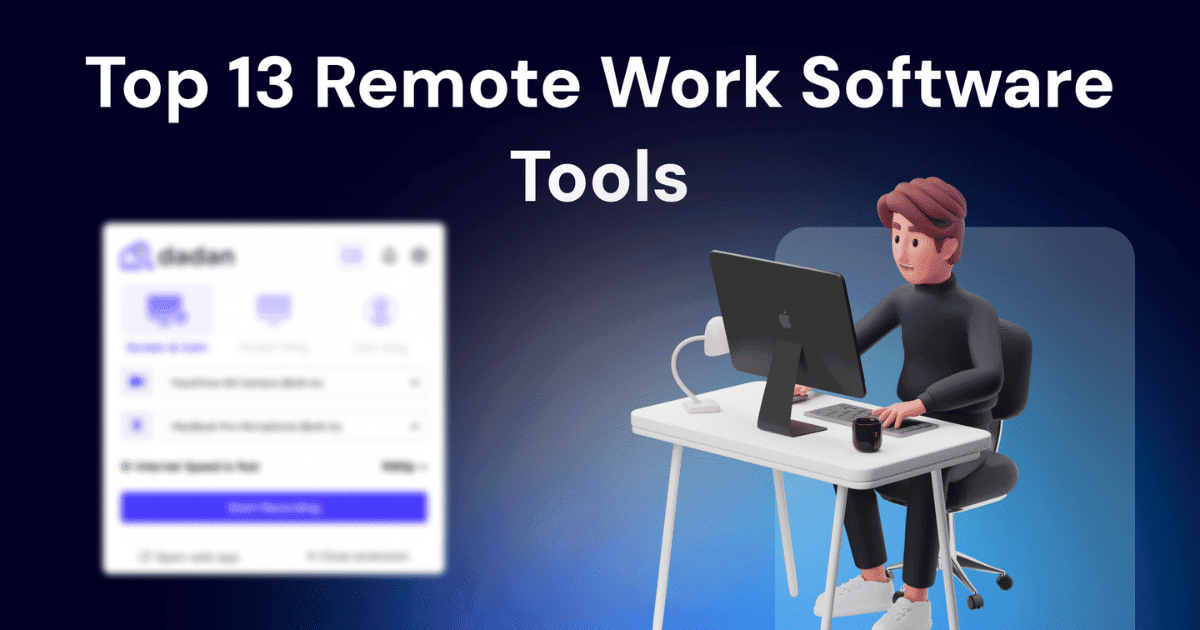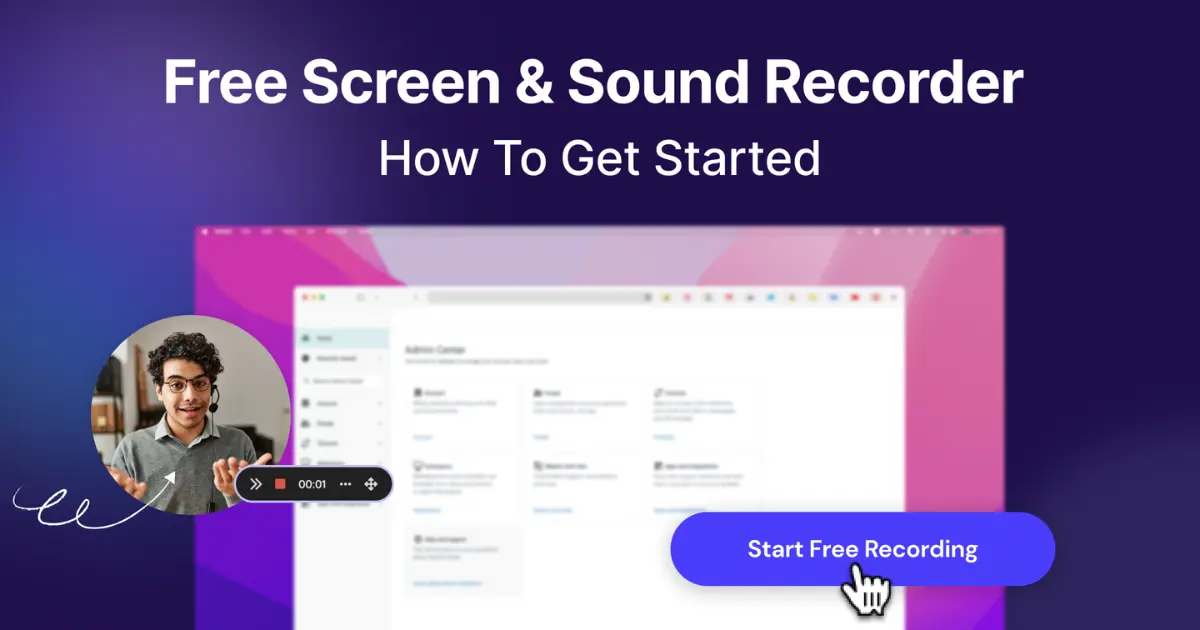As an educator, you record screen-recorded lessons every day. But your content often stops at just being recordings. To add quizzes or chapters, you drag those files into clunky e-learning software, which is a hassle, to say the least.
What if your recording tool could do the heavy lifting? What if it could add AI-powered chapters and interactive quizzes for you? This blog shows you how to do just that.
The Role of AI in Screen Recording
This space is to help you understand how AI makes a screen recording video better. AI has become such a buzzword, it’s hard to trust everything that you read out there. To make ourselves clear and win your trust, here are the real-world AI features that are transforming screen recording content
Automatic Transcription
AI converts your spoken words into accurate text transcripts in real-time. Use these transcripts to repurpose them into blog posts, study guides, or even podcast scripts. Share them with your students as notes, so they can search for keywords and jump to the exact moment you explained a specific formula or concept.
Smart Chapter Generation
AI analyzes your content and automatically breaks your recording into logical chapters with relevant titles. From “Introduction to Photosynthesis” to “Light-Dependent Reactions,” the AI identifies natural topic transitions and creates navigation points. The benefit is two-fold: you don’t have to do it manually, and your students find it easy to decide what they want to learn first.
Real-Time Quiz
AI analyzes your screen recording and generates quiz questions from the content. Here’s a real-world example to help you understand: A biology teacher records a lesson on cell division, and the AI automatically creates questions like “What happens during metaphase?” or “Name the four stages of mitosis.”
Interactive Element Integration
Like a quiz, AI can also embed polls, discussions, True or False questions, and ratings directly into your screen recordings. With these interactive elements, your students aren’t just watching. They’re clicking, answering, and rating lesson difficulty and participating in the process.
Accessibility and Language Support
Have you tried adding subtitles to your video lessons? It’s not easy. But AI makes it easy by automatically generating closed captions, translating content into multiple languages, and creating audio descriptions. Students with hearing difficulties and non-native speakers will find it easy to follow your classes without extra work on your part.
Choose The Right Tool – dadan
Choosing the right screen recording tool is like hiring a teaching partner. It’s a big task, and you know that once you have settled for one, you cannot switch to another screen recorder. We have rounded up a few points that you will find useful when evaluating a screen recorder.
Ease of Use Above Everything Else
Teachers consistently mention that complex software becomes a barrier rather than a help. You need something that works right out of the box without spending hours watching setup tutorials. If you’re fighting with the tool instead of focusing on your lesson, it’s the wrong choice.
AI-Powered Features That Actually Save Time
Since we’ve covered how AI transforms screen recording, look for tools that offer automatic transcription, smart chapter creation, and quiz generation. These aren’t just fancy add-ons; they’re time-savers that let you focus on teaching instead of post-production work.
Reliable Recording Quality Without Technical Headaches
Your students deserve crisp, clear videos. Look for tools that record in at least 1080p with good audio quality.
Seamless Integration with Your Existing Workflow
Whether you’re using Google Classroom, Canvas, or just sharing via email, your screen recorder should play nicely with the tools you already use. The best tool is the one that fits into your current teaching routine, not one that forces you to change everything.
Budget-Friendly with Room to Grow
Start with free versions and upgrade only when needed. Look for tools that offer meaningful free tiers or reasonable pricing that won’t strain your budget or your school’s resources.
Why dadan?
Dadan checks all these boxes. It offers AI-powered features like automatic transcription and interactive element creation in a user-friendly interface. It integrates with Google Classroom, YouTube, and Gmail, which are important tools for your teaching workflow.
It gives the impression of using a traditional e-learning software, sans the complexity and manual work. You can start with a free trial, test all the AI features and interactive tools without any upfront commitment, and upgrade only if it works well for you.
How to Create Interactive Lessons from Screen Recordings: Step-by-Step
Dadan sounds good on paper, but it is impressive in reality, too. We have used this section to share the exact steps to download dadan and start making interactive videos.
Step 1: Download/Install dadan
Dadan is compatible with Windows and macOS. It is also available as a Chrome and Edge extension. Head over to the dadan homepage, and click on one of these buttons to download or install the app.
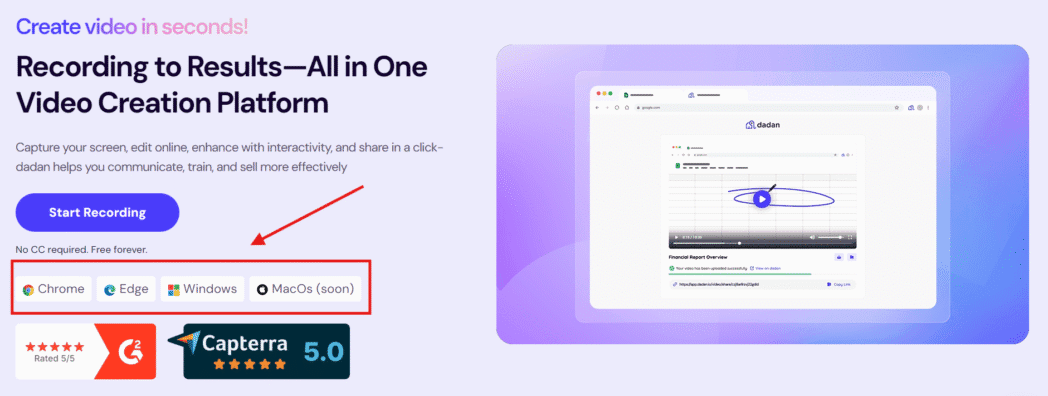
Step 2: Record your video
After downloading/installing dadan, follow the on-screen instructions to complete the process. Once that’s done, open the app/extension, choose the recording mode, area, and hit the record button. Make sure you pin the dadan extension on the browser, so it’s easily accessible.
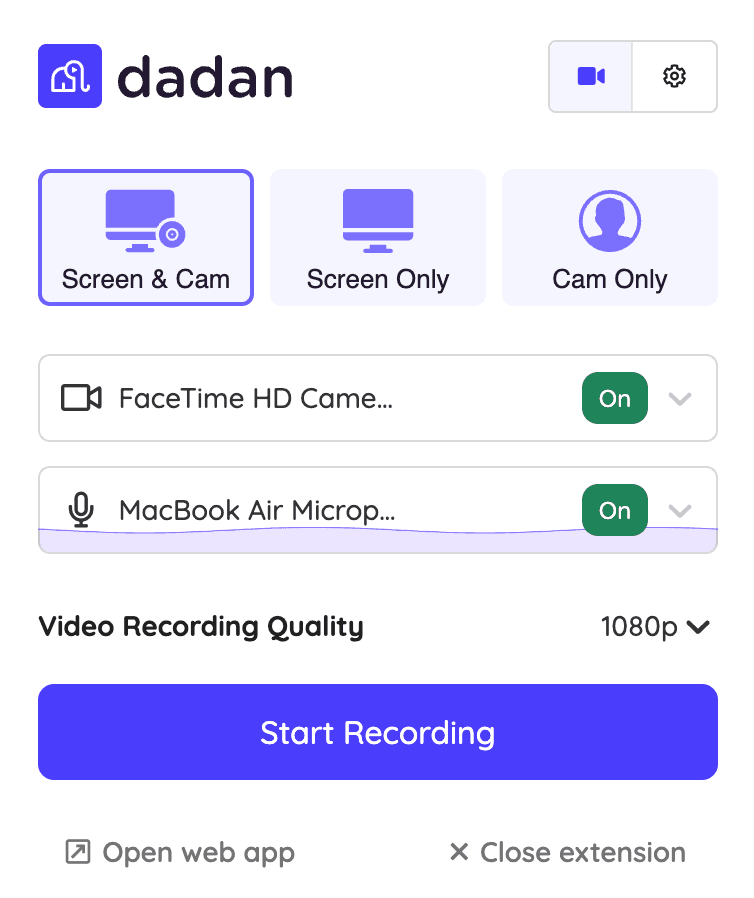
Step 3: Select your recording mode and start recording
Choosing the recording mode and the recording area on the dadan desktop app.
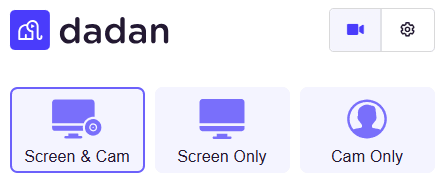
Tap on the pinned dadan icon (elephant logo) on your browser; the dadan extension will open up on your screen. Choose the recording mode and click on the “Start Recording” button.
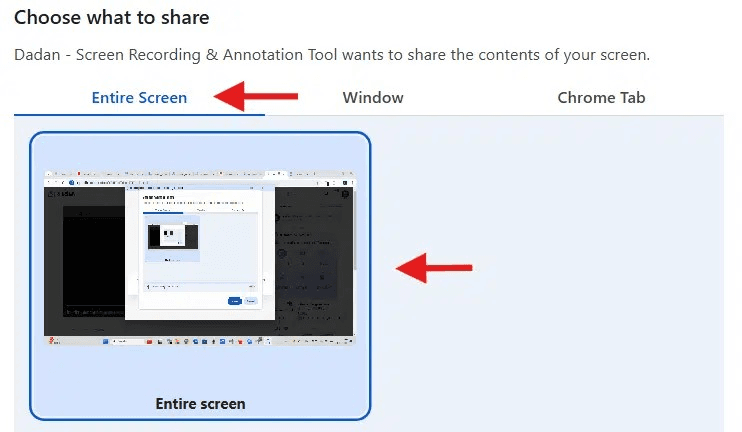
This window will open up. Choose the recording area. You will also see a small system audio toggle button in the bottom-right corner; enable it if you also want to record an audio file saved on your PC. Click on the Share button when you’re ready.
From here, we will list down the AI features that you can add to your recordings. After you stop recording, your personal library opens up with the video you just recorded.
You can start adding the effects from the player page. Here’s how:
Automatic transcriptions
On the right side of the video player, you will find the Dadan AI Assist box. Tap on the Transcript button to start generating the transcript in your language.
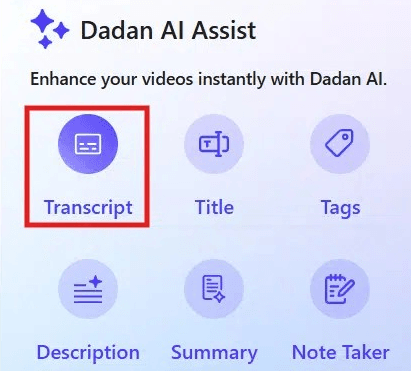
After the transcription process is complete, it will appear in a box containing three options: Search, Edit, and Copy
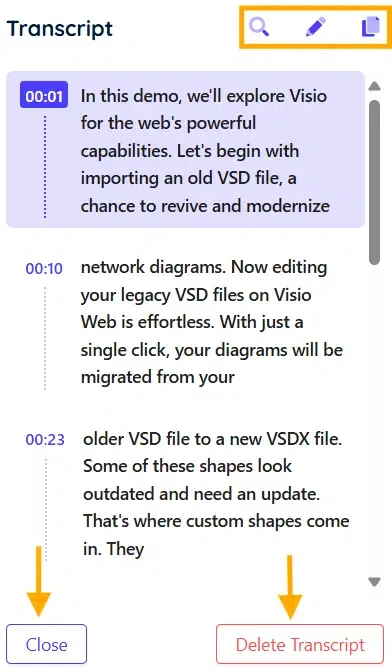
The transcription will also appear as Closed Caption (CC) when you click on the CC button from the gear icon on the player.
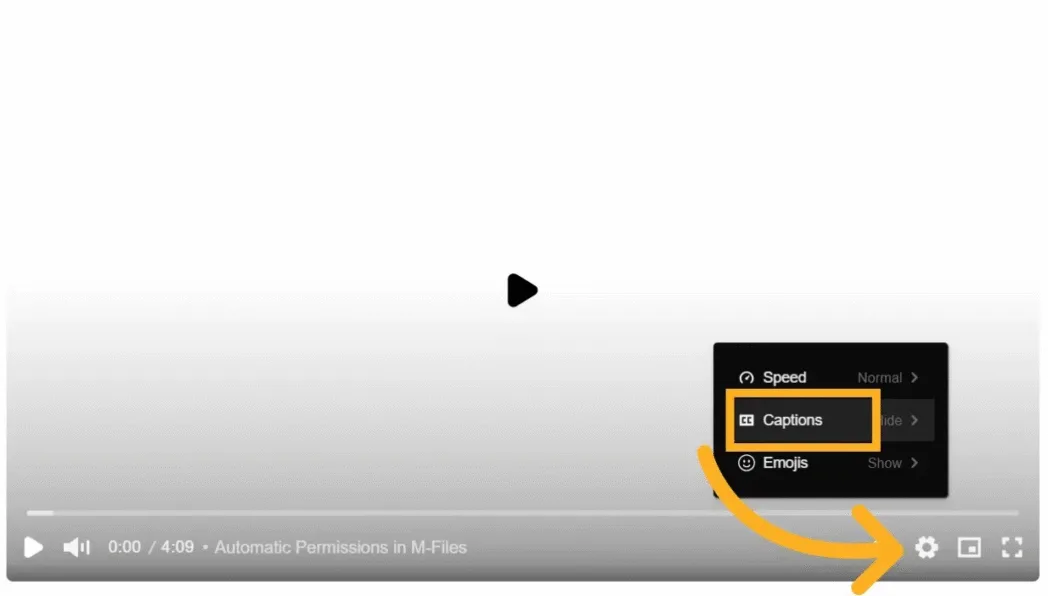
Add interactive questions
From the editing options, you will find an interactions box. It has various options to add interactions to your videos. Click on Interactions and then on Quiz.
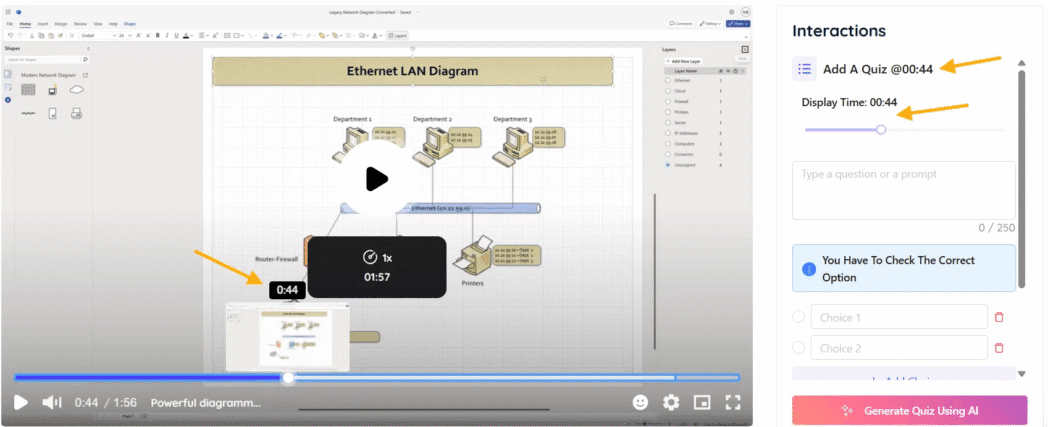
Click on the timeline slider to enter the time stamp where you want to add the quiz. From here, you can type your own question or ask AI to automate it.
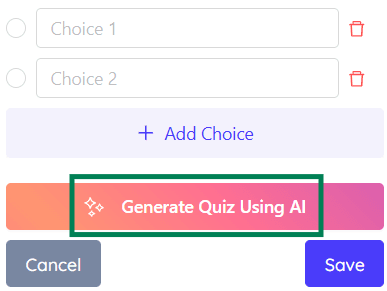
While AI goes through the transcription (it will create one instantly if it was not generated earlier), and comes up with questions on its own, you always have the power to edit and refine them. You also have the option to enhance the question design by adding elements like the “None Of The Above” option or “Add Feedback To Question.”
Add polls
Polls are also an interaction feature. Adding them is similar to adding a quiz. Tap on the timeline where you want to add the poll, type the question, and add choices. Or let AI take care of it.
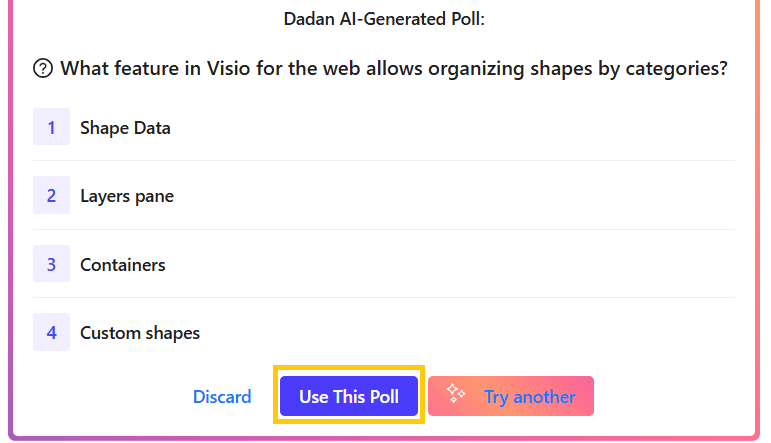
Add the following customizable features to make the polling experience more engaging:
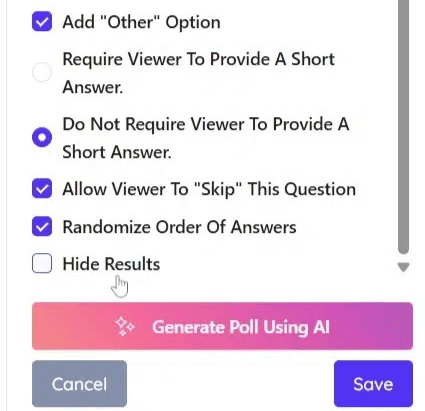
Analyze student engagement
From the Viewer Engagements option on the player page, click on the See Engagement button to check the overall and individual-level activities
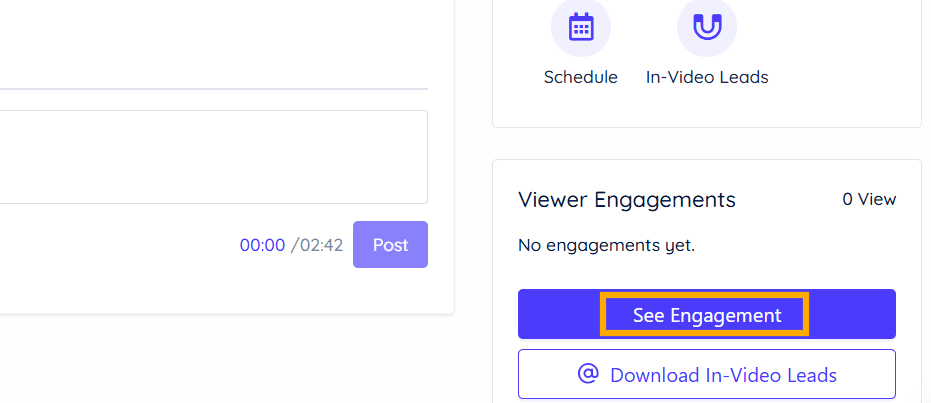
At the overall level, you will know how many views and impressions you got on your video. The total view rate is an interesting metric as it tells you how many impressions (displayed to a viewer) resulted into a view (video watched by the viewer). When it’s 100%, you know everyone has watched the video.
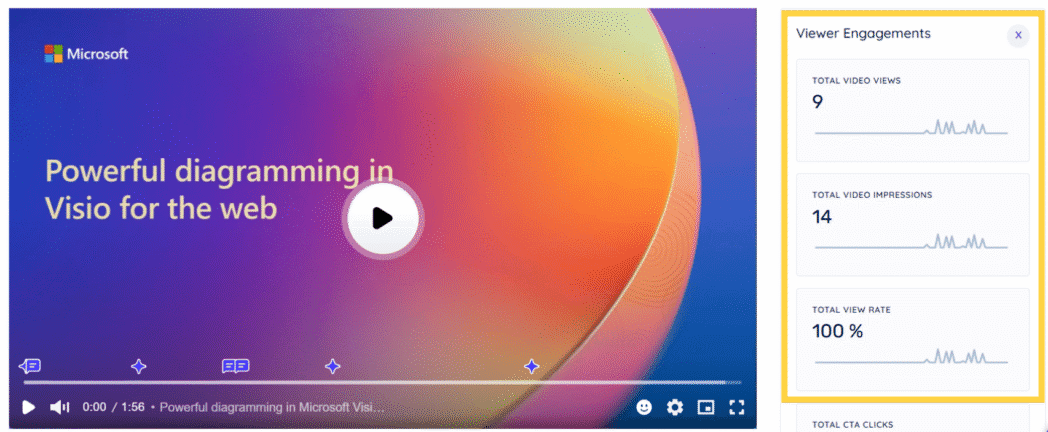
At the individual level, you will know how many times a student has watched the video and how many times they have interacted with the video.
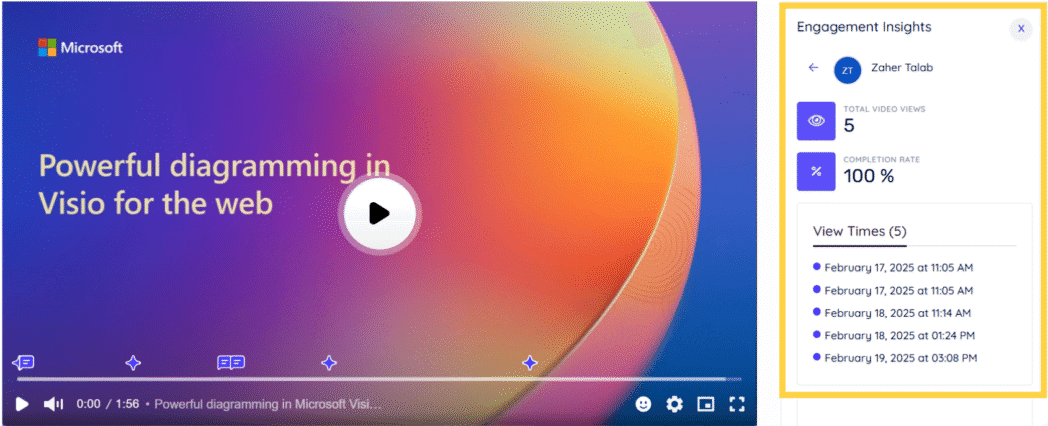

These metrics give you a clear direction about how your video is performing and if your students are enjoying the content
Use Cases for Screen Recording
Flipped Classroom Lessons
Record your core lecture on Dadan, embed quizzes, and assign the video as homework. Let the class time focus only on deeper discussions rather than basic explanations.
Formative Assessment Checks
After explaining a concept, insert true/false or multiple-choice questions mid-video. Quickly understand student comprehension in real time and address doubts in your next live session.
Language Learning and Pronunciation Practice
Use automatic transcriptions and playback to highlight pronunciation tips. Insert polls asking students to rate their confidence with new vocabulary, then follow up with targeted practice.
Revision and Exam Prep Packages
Compile short topic-specific videos, each with chapter markers and practice questions, into a revision series. Students can navigate directly to weak areas and self-test before exams
Interactive Lab Demonstrations
Record software demos or virtual lab experiments, then prompt students with open-ended reflection questions (“What variable changed the outcome?”) to deepen critical thinking.
👉Bonus Read: How to create Educational Videos: Tools, Tips & Best Practices
Benefits of AI-Powered Screen Recording for Education
Significant Time Savings
AI does play a big role in automating mundane tasks that are otherwise time-consuming. Automated transcription, smart chaptering, and quiz generation cut the post-production work, and let you focus on teaching.
Enhanced Student Engagement
Embedded quizzes, polls, and ratings turn passive viewing into active learning. Students stay focused when they know they’ll interact every few minutes.
Personalized Learning Paths
Analytics from interactive elements reveal each student’s strengths and gaps. You can assign targeted follow-up videos or one-on-one sessions based on real data.
Reusable and Repurposable Content
Transcripts and chapter markers make it easy to extract text for blog posts, handouts, or social media snippets, which maximises the value of every recorded lesson.
Improved Accessibility
Automatic closed captions, multilingual transcripts, and audio descriptions ensure all learners can access your content without extra effort
Scalable Teaching Solutions
With AI tools, it’s easy to scale content creation. Even when you have hundreds of students from different countries, you can deliver consistent, interactive lessons without burning out.
You’re only one step away
The sudden surge of AI tools naturally raises questions about authenticity. As an educator, your reputation is on the line. But what you’ve seen in this blog makes it clear, AI isn’t just hype; it’s a practical, huge time-saver for teachers.
The features you’ll find in AI-powered screen recorders like dadan aren’t cosmetic; they enhance real teaching and learning. Students also benefit by interacting with the content through ratings or thoughtful open-ended questions that encourage critical thinking.
Adding interactions to screen recording is still new but evolving fast. If you’re ready to take the step towards AI screen recording, sign up for a free trial with dadan.
FAQs
How can AI make screen-recorded lessons more engaging?
AI enables features like interactive quizzes, real-time polls, and chapter markers, turning passive videos into active learning experiences and personalizing how students engage with content.
Can educators add quizzes and interactions automatically using AI?
Yes, AI can generate and insert quizzes, polls, and feedback prompts based on lesson content, allowing educators to increase interactivity with minimal manual effort.
Does AI transcription improve accessibility for students?
AI-generated transcripts provide captions and support for multiple languages, making lessons accessible to students with hearing impairments or language barriers.
How do AI-generated summaries help students with revision?
Summaries created by AI highlight key concepts, making it easier for students to review and focus on important information before exams or assessments.
Can screen recordings with AI be reused for multiple classes?
AI screen recordings are easy to repurpose by editing, updating quizzes, or customizing chapters, allowing educators to reuse content across different classes or subjects.
Is AI-powered screen recording useful for both online and offline teaching?
Yes, these tools enhance online teaching and can be used to supplement in-person instruction, support blended learning, and provide reusable study resources.
Do students prefer interactive video lessons over traditional screen recordings?
Research indicates that students engage more, recall better, and prefer videos with interactive elements over plain recorded lectures.
How secure are AI-powered educational videos and transcripts?
Most platforms use encrypted storage and adhere to privacy regulations to protect student data and ensure transcripts and videos are safely managed.
